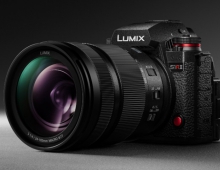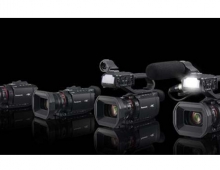
Panasonic To Standardize 3D Active Eyewear Glasses
Panasonic and XPAND 3D announced that they have formulated M-3DI, a new standard for 3D active-shutter eyewear products that will bring about compatibility among 3D TVs, computers, home projectors and cinema projection.
Other 3D technology providers for televisions, projectors and cinemas have agreed to participate in supporting the new standard, including Changhong Electric Co., Ltd., FUNAI Electric Co., Ltd., Hisense Electric Co., Ltd., Hitachi Consumer Electronics Co., Ltd., Mitsubishi Electric Corporation, Seiko Epson Corporation, SIM2 Multimedia S.p.A. and ViewSonic Corporation.
Licensing of the M-3DI technology will begin next month from M-3DI License Agent, providing a communication protocol between 3D active-shutter eyewear products and 3D-capable TVs, front projectors, computers and cinema systems (XPAND-compatible theaters), Panasonic said.
Xpand actually already offers its own brand of universal active glasses.
Currently, if you buy a 3D TV that uses active shutter glasses, you're limited to buying 3D glasses that are made by the same manufacturer as the manufacturer of your TV. Panasonic wants to change that. The technology will let consumers enjoy 3D content e across all types of compatible 3D displays as well as at movie theaters, with a single pair of 3D active-shutter eyewear.
Participants in the standard-making will also publish the specification of the standard and will organize quality control testing and approval procedures.
The proponents of the M-3DI standard believe that this program, as an industry-wide initiative, will make a significant contribution to accelerate penetration of 3D TVs, computers and projectors. While the M-3DI standard to be licensed at this time uses infrared communication technology, radio communications will be considered for the next step.
"Panasonic has led in Full HD 3D innovation through the development of technologies that enable consumers to have a truly immersive experience with our 3D VIERA HDTV's and Blu-ray 3D players," said Hirotoshi Uehara, director of the Television Business Unit, Visual Products and Display Devices Business Group of Panasonic's AVC Networks Company. "Now, we are excited to be joining XPAND 3D and the other participants of the M-3DI initiative to make Full HD 3D TV even more widely accessible. Joining forces with other 3D product manufacturers to standardize active-shutter 3D eyewear will help ensure that consumers have a superlative 3D experience at home and in the movie theater. This is a major step toward creating truly universal 3D eyewear."
Earlier this month, the Consumer Electronics Associlation (CEA) also announced that it was seeking proposals for standardizing 3D active eyewear that uses an infrared (IR) synchronized interface from consumer electronics (CE) manufacturers.
CEA has set up a 3D Technologies Working Group, R4WG16, in an effort to standardize the 3D glasses used in 3D displays. CEA is proposals for an active 3D eyewear standard until March 31, and the M-3DI group is expected to submit their proposal.
Licensing of the M-3DI technology will begin next month from M-3DI License Agent, providing a communication protocol between 3D active-shutter eyewear products and 3D-capable TVs, front projectors, computers and cinema systems (XPAND-compatible theaters), Panasonic said.
Xpand actually already offers its own brand of universal active glasses.
Currently, if you buy a 3D TV that uses active shutter glasses, you're limited to buying 3D glasses that are made by the same manufacturer as the manufacturer of your TV. Panasonic wants to change that. The technology will let consumers enjoy 3D content e across all types of compatible 3D displays as well as at movie theaters, with a single pair of 3D active-shutter eyewear.
Participants in the standard-making will also publish the specification of the standard and will organize quality control testing and approval procedures.
The proponents of the M-3DI standard believe that this program, as an industry-wide initiative, will make a significant contribution to accelerate penetration of 3D TVs, computers and projectors. While the M-3DI standard to be licensed at this time uses infrared communication technology, radio communications will be considered for the next step.
"Panasonic has led in Full HD 3D innovation through the development of technologies that enable consumers to have a truly immersive experience with our 3D VIERA HDTV's and Blu-ray 3D players," said Hirotoshi Uehara, director of the Television Business Unit, Visual Products and Display Devices Business Group of Panasonic's AVC Networks Company. "Now, we are excited to be joining XPAND 3D and the other participants of the M-3DI initiative to make Full HD 3D TV even more widely accessible. Joining forces with other 3D product manufacturers to standardize active-shutter 3D eyewear will help ensure that consumers have a superlative 3D experience at home and in the movie theater. This is a major step toward creating truly universal 3D eyewear."
Earlier this month, the Consumer Electronics Associlation (CEA) also announced that it was seeking proposals for standardizing 3D active eyewear that uses an infrared (IR) synchronized interface from consumer electronics (CE) manufacturers.
CEA has set up a 3D Technologies Working Group, R4WG16, in an effort to standardize the 3D glasses used in 3D displays. CEA is proposals for an active 3D eyewear standard until March 31, and the M-3DI group is expected to submit their proposal.





















